These are arranged according to there timeline, generation staring from 1 to 5
1 2 Next>>
10,000-15,000 AD
The hypernova of Eta Carinae is affecting our region of the galaxy
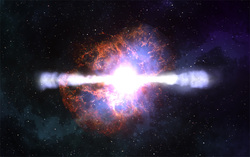
Eta Carinae is among the largest, most volatile stars in our galaxy. Its temperature is so high that it is unable to hold onto its own gas, with constant streams being ejected from the surface. It first came to attention in 1843 when it flared to magnitude -0.8, becoming the second brightest star in the night sky.
It subsequently died down, before brightening again in the late 1990s. This fluctuation continues - with periodic flaring and dimming - until one day the inevitable happens. Unable to maintain its cohesion, Eta Carinae erupts into one of the deadliest known forces in nature: a hypernova.
For a brief period, this colossal explosion outshines the entire galaxy. It is bright enough to be visible during daytime on Earth, while at night, it is similar to the full moon.
Of much greater concern, however, are the lethal jets of gamma radiation released by the dying star. These begin to shoot outward, at such high energies that even systems thousands of light years away are affected. As a result, numerous planets in our region of the galaxy undergo mass extinctions during this time.
It subsequently died down, before brightening again in the late 1990s. This fluctuation continues - with periodic flaring and dimming - until one day the inevitable happens. Unable to maintain its cohesion, Eta Carinae erupts into one of the deadliest known forces in nature: a hypernova.
For a brief period, this colossal explosion outshines the entire galaxy. It is bright enough to be visible during daytime on Earth, while at night, it is similar to the full moon.
Of much greater concern, however, are the lethal jets of gamma radiation released by the dying star. These begin to shoot outward, at such high energies that even systems thousands of light years away are affected. As a result, numerous planets in our region of the galaxy undergo mass extinctions during this time.
30,000 AD
The first wave of sub-light vessels has reached the galactic core
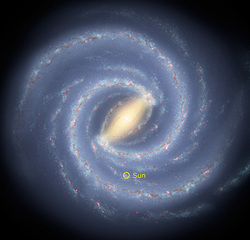
The core region is located 27-28,000 light years from Earth. At its centre lies the largest black hole in the galaxy - a supermassive black hole. Having travelled for many millennia, the first wave of sub-light spacecraft has now arrived in its vicinity.
These ships contain no physical human crew, being entirely computerised and automated. Numbering in the trillions, they have self-replicated along the way, using local stellar and planetary material gathered en route. Systems encountered during this epic voyage have become seeded with computational substrates and saturated with artificial intelligence - individual planets and moons becoming like brain cells in a gigantic, artificial organism. It is almost as though the galaxy itself is waking up and achieving self-awareness.
There is no competition or battle to claim ownership of the core. Wars, greed and archaic concepts of nationality have long since disappeared, with sentient beings now united under a common heritage.
These ships contain no physical human crew, being entirely computerised and automated. Numbering in the trillions, they have self-replicated along the way, using local stellar and planetary material gathered en route. Systems encountered during this epic voyage have become seeded with computational substrates and saturated with artificial intelligence - individual planets and moons becoming like brain cells in a gigantic, artificial organism. It is almost as though the galaxy itself is waking up and achieving self-awareness.
There is no competition or battle to claim ownership of the core. Wars, greed and archaic concepts of nationality have long since disappeared, with sentient beings now united under a common heritage.
35,000 AD
Ross 248 becomes the closest star to our Sun
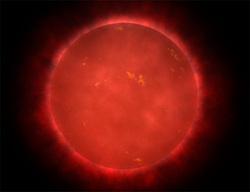
Alpha Centauri was previously the closest star. Ross 248 is a red dwarf, with approximately 12% of the Sun's mass and 16% of the Sun's radius, but only 0.2% of its luminosity. However - it is also a "flare star", that periodically undergoes sudden, dramatic increases in brightness for a few minutes.
In 2010, Ross 248 was 10.3 light years from Earth, with a radial velocity of -81 km/s. By 35,000 AD, it is closer than Alpha Centauri. It reaches its closest point in 38,000 AD - moving to within 3.1 light years - before receding again, becoming further from the Sun than Alpha Centauri in 44,000 AD.
In 2010, Ross 248 was 10.3 light years from Earth, with a radial velocity of -81 km/s. By 35,000 AD, it is closer than Alpha Centauri. It reaches its closest point in 38,000 AD - moving to within 3.1 light years - before receding again, becoming further from the Sun than Alpha Centauri in 44,000 AD.
100,000 AD
The red hypergiant star, VY Canis Majoris, has exploded by now, producing one of the largest supernovas the galaxy has ever seen
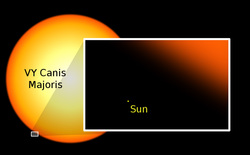
VY Canis Majoris, at between 1800 and 2100 times bigger than our Sun (8.4–9.8 au, 2.7 billion km or 1.7 billion miles in radius), is the largest known star in the Milky Way, and also one of the brightest known. It is located around 4,900 light years from Earth, in the constellation Canis Major. It was discovered to be very unstable, throwing off much of its mass into the surrounding nebula. By 100,000 it has finally exploded, creating a supernova bright enough to be seen during daylight hours on Earth.
298,000 AD
Voyager 2 is approaching Sirius
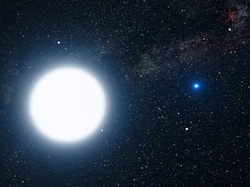
Voyager 2 was an unmanned space probe launched in 1977 to investigate the outer planets of the solar system. Identical in form and function with its sister craft, Voyager 1, it was launched on a slower, more curved trajectory that allowed it to be kept in the plane of the Ecliptic. This enabled it to be sent on to Uranus and Neptune by means of utilising gravity assists during its fly-by of Saturn in 1981 and of Uranus in 1986.
By 2010, Voyager 2 was around 92 AU (13.75 billion km, 8.5 billion miles, or 0.001443 ly) from the Sun, deep in the scattered disc, and traveling outward at roughly 3.26 AU per year.
The probe survives for thousands of years in the emptiness of interstellar space. It eventually passes by Sirius, having covered a distance of over 25 trillion miles. Sirius is the brightest star in the sky when viewed from Earth.
By 2010, Voyager 2 was around 92 AU (13.75 billion km, 8.5 billion miles, or 0.001443 ly) from the Sun, deep in the scattered disc, and traveling outward at roughly 3.26 AU per year.
The probe survives for thousands of years in the emptiness of interstellar space. It eventually passes by Sirius, having covered a distance of over 25 trillion miles. Sirius is the brightest star in the sky when viewed from Earth.
1,000,000 AD
Planet-sized computers are dominating the Local Group of galaxies;
AI controls all government and other systems; the descendants of humanity are a Type 3 civilisation on the Kardashev scale
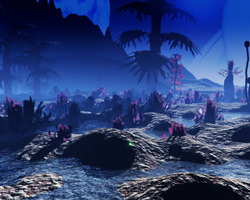
Purely biological (non-cyborg) humans are exceedingly rare now. The very few which do remain comprise only a tiny fraction of the total sentient minds in existence. Though free to come and go as they please, they have practically zero influence in any governmental systems on Earth or elsewhere, being regarded as wholly subordinate to the AIs and other entities. As a species, homo sapiens has continued to evolve over time. This has led to a further increase in cranial size, a near-total absence of hair, an elongation of limbs, a more robust and capable immune system, and a greatly increased lifespan.
The vast majority of humans have long since abandoned these primitive biological forms, making the transition to machines or other substrates and achieving practical immortality. The entire Milky Way galaxy has been explored by these transhumans and their sentient ships.
Faster-than-light travel is now possible using Alcubierre drives, which are compact and miniaturised enough to be found in even personal, single-occupancy vessels. These use such colossal amounts of power that they cause the fabric of space ahead of a ship to contract, while the space behind it expands. This bypasses the laws of relativity, allowing travel to even neighbouring galaxies such as M31 (Andromeda) and M33 (Triangulum).
Planet-sized computers are being constructed throughout the Local Group of galaxies, with every available resource going towards their production. All of the "dead" worlds, comets, moons and asteroids considered uninhabitable are being converted into these machines, forming a vast network millions of light years across space. Each computer is capable of instant communications with any other, regardless of distance.
A number of alien intelligences have been contacted by now. In addition, ancient ruins have been uncovered on many worlds - indicating advanced civilisations which somehow failed or destroyed themselves in the distant past. Thousands of other planets have been discovered to have rich ecosystems, brimming with diverse plant and animal (and other) life. Most of the fauna being catalogued is small and insect-like, but some is more developed with intelligence comparable to higher mammals such as dolphins, monkeys and cats.
The vast majority of humans have long since abandoned these primitive biological forms, making the transition to machines or other substrates and achieving practical immortality. The entire Milky Way galaxy has been explored by these transhumans and their sentient ships.
Faster-than-light travel is now possible using Alcubierre drives, which are compact and miniaturised enough to be found in even personal, single-occupancy vessels. These use such colossal amounts of power that they cause the fabric of space ahead of a ship to contract, while the space behind it expands. This bypasses the laws of relativity, allowing travel to even neighbouring galaxies such as M31 (Andromeda) and M33 (Triangulum).
Planet-sized computers are being constructed throughout the Local Group of galaxies, with every available resource going towards their production. All of the "dead" worlds, comets, moons and asteroids considered uninhabitable are being converted into these machines, forming a vast network millions of light years across space. Each computer is capable of instant communications with any other, regardless of distance.
A number of alien intelligences have been contacted by now. In addition, ancient ruins have been uncovered on many worlds - indicating advanced civilisations which somehow failed or destroyed themselves in the distant past. Thousands of other planets have been discovered to have rich ecosystems, brimming with diverse plant and animal (and other) life. Most of the fauna being catalogued is small and insect-like, but some is more developed with intelligence comparable to higher mammals such as dolphins, monkeys and cats.
7,600,000 AD
Phobos is ripped apart by Mars' gravity
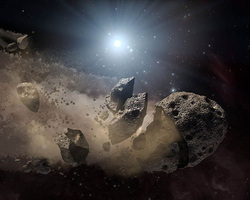
Phobos is the largest and closest of the two moons of Mars. Because its orbital period is shorter than a Martian day, tidal deceleration has been decreasing its orbital radius at the rate of about 20 metres (66 ft) per century.
By this date, it has passed the Roche limit - the distance within which a celestial body, held together only by its own gravity, will disintegrate due to a second body's tidal forces exceeding the first's gravitational self-attraction.
Phobos begins to break apart. It gradually becomes a ring system over the following 3 million years, with many of these fragments impacting upon Mars itself.
Neptune's largest moon - Triton - will share a similar fate.
By this date, it has passed the Roche limit - the distance within which a celestial body, held together only by its own gravity, will disintegrate due to a second body's tidal forces exceeding the first's gravitational self-attraction.
Phobos begins to break apart. It gradually becomes a ring system over the following 3 million years, with many of these fragments impacting upon Mars itself.
Neptune's largest moon - Triton - will share a similar fate.
10,000,000 AD
T Pyxidis is threatening Earth with lethal levels of gamma radiation
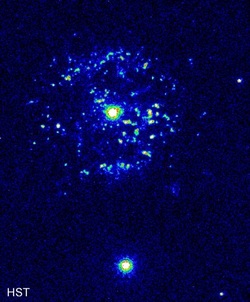
T Pyxidis is a binary star system in the constellation Pyxis. It contains a sun-like star and a white dwarf. Because of the strong gravitational effect of the white dwarf, it draws matter from the other star which causes periodic thermonuclear explosions (so-called novae) to occur.
Around this time, it reaches the so-called Chandrasekhar Limit, causing it to undergo an instantaneous collapse that completely destroys the star in a Type 1a supernova. This catastrophic event releases 10 million times more energy than a typical nova explosion, or the equivalent of 20 billion, billion, billion megatons of TNT.
The system is only 3,260 light years away - close enough to affect our solar system. Unless Earth is protected by advanced technology by now, waves of gamma radiation could destroy the ozone layer, leading to mass extinctions.
Around this time, it reaches the so-called Chandrasekhar Limit, causing it to undergo an instantaneous collapse that completely destroys the star in a Type 1a supernova. This catastrophic event releases 10 million times more energy than a typical nova explosion, or the equivalent of 20 billion, billion, billion megatons of TNT.
The system is only 3,260 light years away - close enough to affect our solar system. Unless Earth is protected by advanced technology by now, waves of gamma radiation could destroy the ozone layer, leading to mass extinctions.
10,000,000 AD
Triton’s decaying orbit has led to it breaking up around Neptune, forming a new ring system
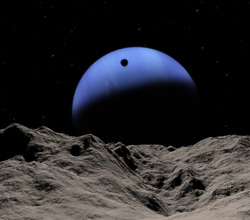
That's assuming the moon still exists in a form we would recognise. The descendants of humanity may have converted its raw mass into artificial structures by now. Even Neptune itself may no longer exist – the planet’s hydrogen and helium may have been siphoned off for use in starships and industrial processes.
30,000,000 - 40,000,000 AD
At some point during this period, an asteroid 10-20 km in size comes on a direct collision course with Earth
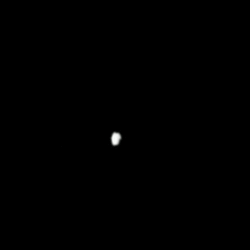
Impacts of this size tend to happen every 100 million years or so. The last such event occurred 65m years ago - resulting in the extinction of the dinosaurs.
If humanity or its descendants are no longer around to protect it, any remaining life on the planet may be in danger of a similar mass extinction during this time.
An impact of this scale would release around 4×1023 joules of energy, equivalent to 100 million megatons of TNT. By contrast, the most powerful man-made explosion in history, the "Tsar Bomba", had a yield of only 50 megatons.
If landing in the ocean, it would produce megatsunamis reaching thousands of feet high.
A cloud of super-heated dust, ash and steam would spread from the crater, as the impactor burrowed underground in less than a second. Excavated material and pieces of the impactor - ejected out of the atmosphere by the blast - would be heated to incandescence upon re-entry, broiling the Earth's surface and igniting global wildfires. Meanwhile, colossal shock waves would spawn global earthquakes and volcanic eruptions. The emission of dust and particles would cover the entire surface of the Earth for several years, possibly a decade, creating a harsh environment for living things to survive. The shock production of carbon dioxide caused by the destruction of carbonate rocks would trigger a sudden greenhouse effect.
Over a longer period of time, sunlight would be blocked from reaching the surface of the earth by the dust particles in the atmosphere, cooling the surface dramatically. Photosynthesis by plants would be interrupted, collapsing the entire food chain.
If humanity or its descendants are no longer around to protect it, any remaining life on the planet may be in danger of a similar mass extinction during this time.
An impact of this scale would release around 4×1023 joules of energy, equivalent to 100 million megatons of TNT. By contrast, the most powerful man-made explosion in history, the "Tsar Bomba", had a yield of only 50 megatons.
If landing in the ocean, it would produce megatsunamis reaching thousands of feet high.
A cloud of super-heated dust, ash and steam would spread from the crater, as the impactor burrowed underground in less than a second. Excavated material and pieces of the impactor - ejected out of the atmosphere by the blast - would be heated to incandescence upon re-entry, broiling the Earth's surface and igniting global wildfires. Meanwhile, colossal shock waves would spawn global earthquakes and volcanic eruptions. The emission of dust and particles would cover the entire surface of the Earth for several years, possibly a decade, creating a harsh environment for living things to survive. The shock production of carbon dioxide caused by the destruction of carbonate rocks would trigger a sudden greenhouse effect.
Over a longer period of time, sunlight would be blocked from reaching the surface of the earth by the dust particles in the atmosphere, cooling the surface dramatically. Photosynthesis by plants would be interrupted, collapsing the entire food chain.
